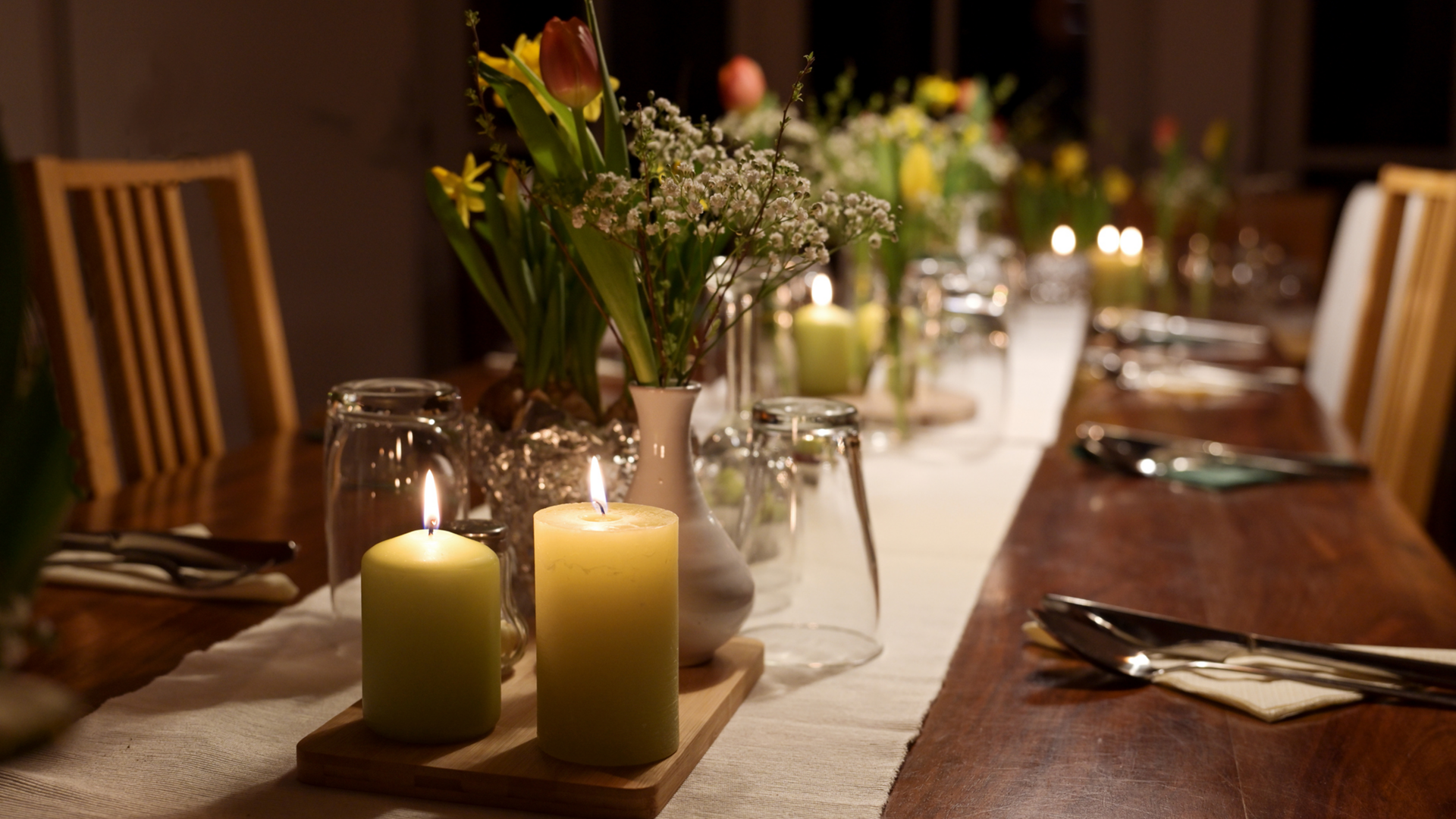
Eating in the right light
You need good lighting when you’re eating – but not always. After all, ‘dinner in the dark’ also has its charm. How does the lighting affect your perception of food and your sense of taste? What’s the best light for showcasing your food? Read on to find out why the lighting in your kitchen as a living space is so important.
The right lighting above your dining table
A top-notch meal needs a pleasant ambiance – and appropriate lighting plays a key role here.
Where do you like eating most? Many families eat together around a conventional dining table. The light above the table should light up the dining area harmoniously while creating a decorative effect.
Lighting design: whether in the dining room or the kitchen, ceiling lamps should never hang directly above the table otherwise they shine too brightly on the plates. We recommend using warm white light as it has a cosy and calming effect. Alternatively, you can use several lights with selectable shades and dimmable brightness levels.
Tip: if your lights are height-adjustable and dimmable, you can adjust the light to the time of day when you’re eating so that you always have the right atmosphere.
Bright, dimmed or dark?
Which light shows off your food to its best advantage? It depends on the situation. A complex dish whose individual elements are arranged in a special way like a culinary work of art need bright lighting to stimulate our sense of sight.
Is taste the be all and end all? Not always, because a candlelit dinner is more about the atmosphere. You should use candlelight if you wish to create a romantic feel. In this case, the sense of sight fades into the background.
If our perception is restricted, this changes our sensory experience. A dinner in the dark heightens our closely linked senses of taste and smell, because we can’t rely on our sense of sight, which is often a distraction. This makes our tongue and nose more active, and they perceive food more consciously – an exciting experience that you should definitely try sometime.
Eating as an exciting sensory journey
As the saying goes, food is a feast for the eyes. When you look at attractively arranged food, it literally makes your mouth water. And with the right lighting, you can enjoy it in its entirety. You can often tell a lot about the freshness, type and consistency of food by its shape and colour. Supermarkets and caterers use this to their advantage:
- The colour of fruit and vegetables is very intense with a light temperature of 3,000 Kelvin.
- Red fish and red meat look fresher in warmer temperatures.
- White fish has a particularly fresh appearance in cool white light.
- Cheese and bread look more appetizing to many people in warm white light.
As you can see, lighting affects our eating habits. Colour associations also convey preferences: do you also associate yellow with sour flavours and red with spicy tastes? One thing’s for sure: cooking and eating call upon all of our senses – sight, smell, hearing, taste and touch – and we can only achieve maximum enjoyment with a combination of all of the above.